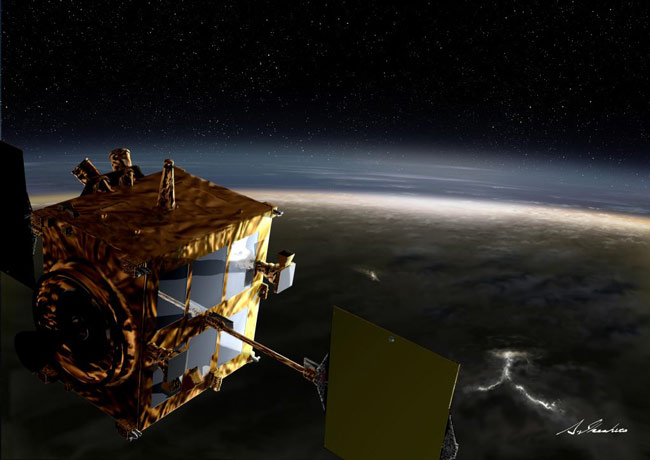Japan Prepares Double Mission to Venus for Monday Launch

A new Japanese weather probe and daring solar sail conceptare scheduled to blast off together on Monday for a six-month journey to study Venus.
The VenusClimate Orbiter, named Akatsuki, represents the main payload sitting aboardthe H-2A rocket slated for launch at 5:44:14 p.m. EDT (2144:14 GMT) on Monday, May17, though it will be early Tuesday at Japan's Tanegashima Space Centerlaunching site. The launch requires a precisetime window each day in order to achieve a successful trajectory towardVenus.
But Akatsuki, which means "Dawn" in Japanese,won't fly alone. The solar sail, named Ikaros (Interplanetary Kite-craftAccelerated by Radiation Of the Sun), gets to piggyback aboard the rocket asone of five smaller secondary payloads. The four remaining payloads representsmall Earth satellites and experiments built by private universities andcorporations.
Both the 1,100-pound (499 kg) Akatsuki spacecraft and the 700-pound(315 kg) Ikaros should set off for Venus on the same course, if everything goessmoothly. But only Akatsuki has an actual date scheduled with Venus.
"Akatsuki is the world's first planetary probe thatdeserves to be called a meteorological satellite," said Takeshi Imamura, aJAXA project scientist with the Venus Climate Orbiter mission.
The Japan Aerospace Exploration Agency (JAXA) has designedits boxy probe to investigate the origin of sulfuric acid clouds and create a3-D model of high-speed winds in the tempestuous atmosphere of Venus. It alsocarries an instrument that could detect lightning, if any exists within thethick Venusclouds.
Ikaros has a different journey ahead. The solar sail'sdesign should provide the first test ever of solarsail propulsion based on harnessing the pressure of sunlight during anambitious three-year journey to the far side of the sun.
Breaking space news, the latest updates on rocket launches, skywatching events and more!
The kite-like solar sail will also test thin film solarcells that generate electricity and might someday help power a hybrid engine ofsorts in space. But Ikaros must rely solely upon the solar pressure withouthaving such an engine on board.
Akatsuki's study of Venus is planned to last at least twoyears after it enters the planet's orbit. It would join a constellation ofother JAXA missions that have visited Earth's moon and an asteroid, as well asone failed mission to Mars. ?
The Japanese space agency also launched a new spacefreighter late last year aboard an H-2B rocket, which represents the newer andbigger descendant of the H-2A rocket that will launch the Venus mission.
- Gallery - Beneath the Clouds of Venus
- Top 10 Extreme Planet Facts
- Japan Aims for Venus, Part 2
Jeremy Hsu is science writer based in New York City whose work has appeared in Scientific American, Discovery Magazine, Backchannel, Wired.com and IEEE Spectrum, among others. He joined the Space.com and Live Science teams in 2010 as a Senior Writer and is currently the Editor-in-Chief of Indicate Media. Jeremy studied history and sociology of science at the University of Pennsylvania, and earned a master's degree in journalism from the NYU Science, Health and Environmental Reporting Program. You can find Jeremy's latest project on Twitter.
